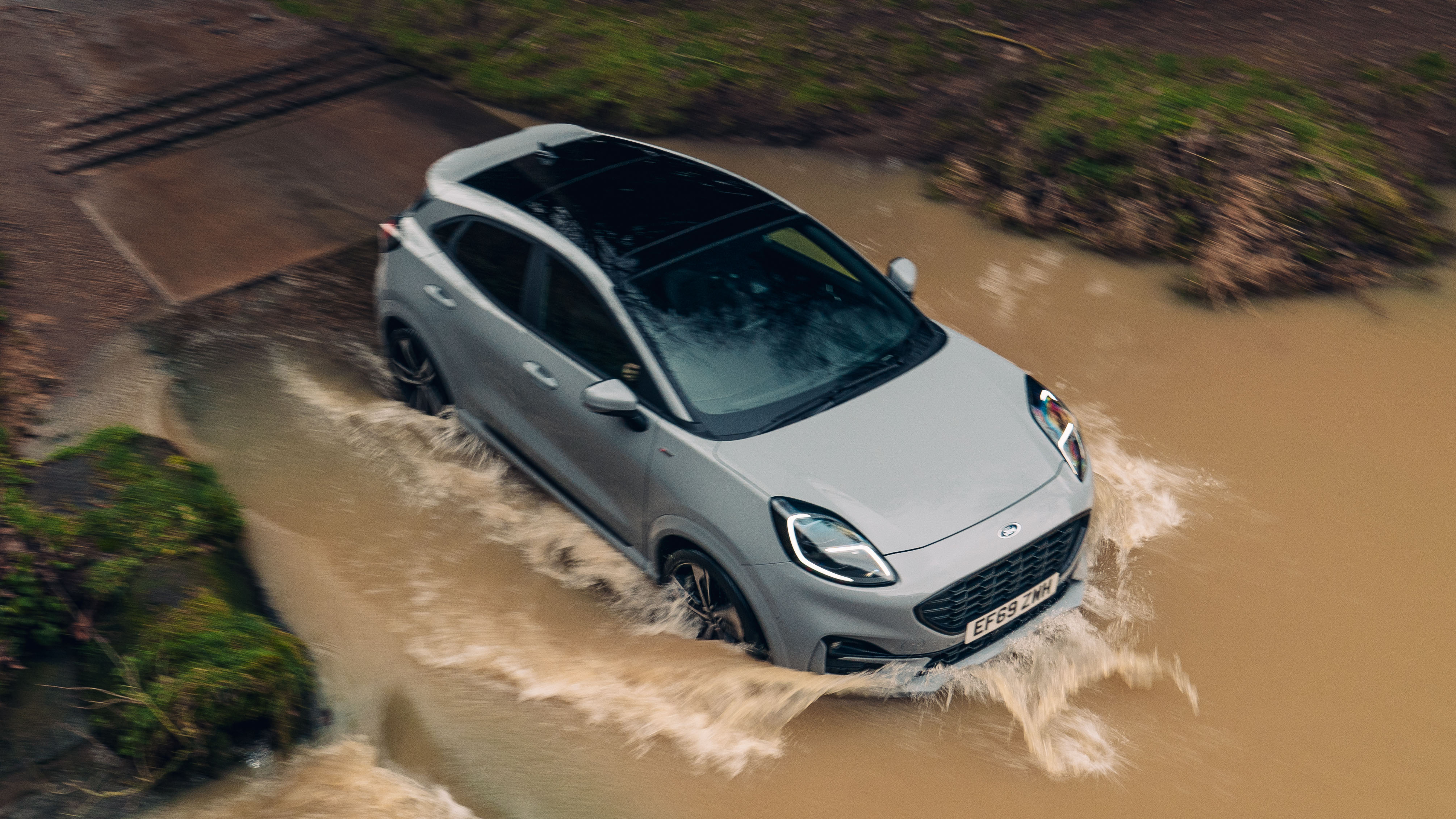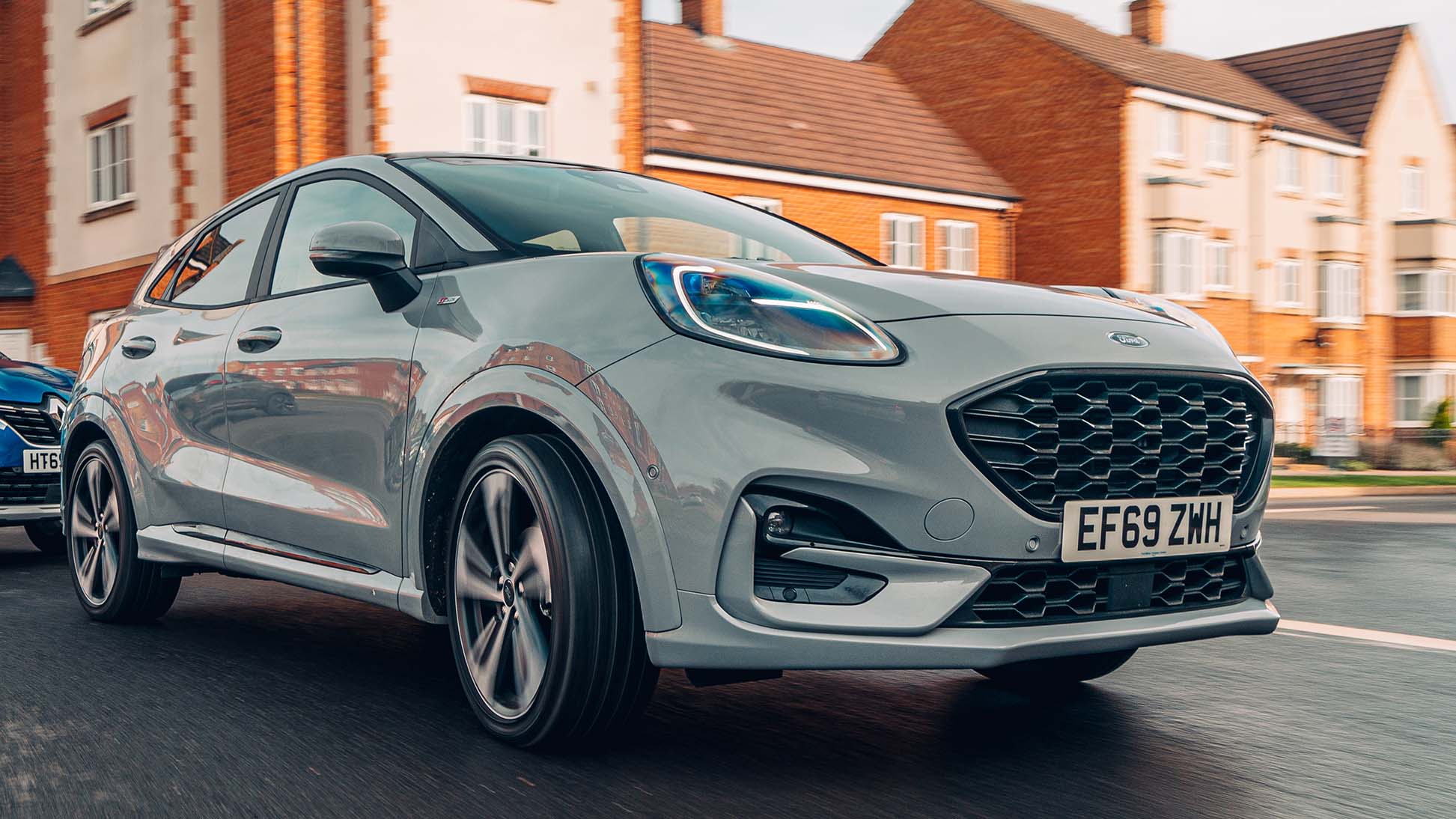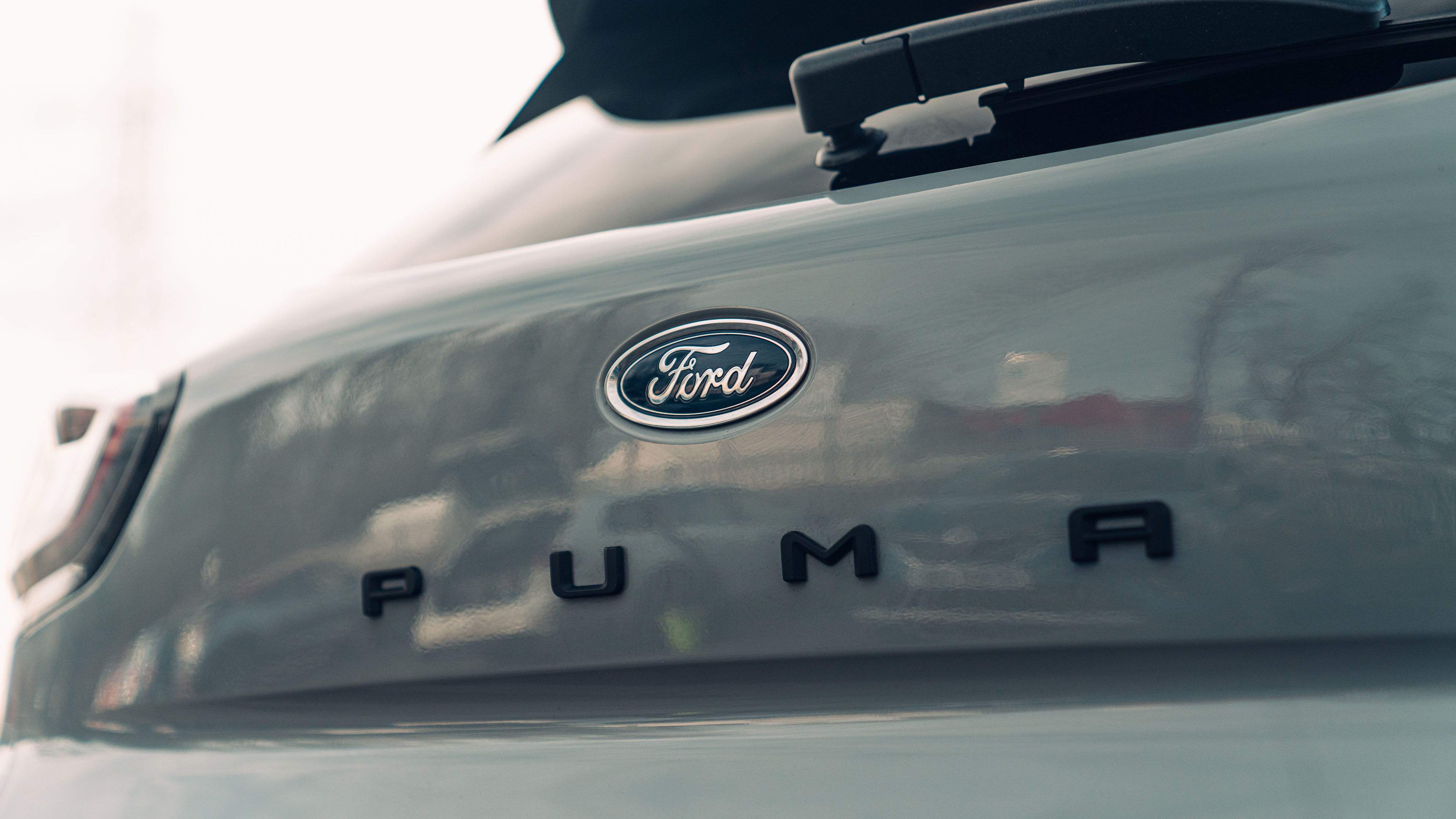
SPEC HIGHLIGHTS
- BHP
125bhp
- 0-62
9.8s
- CO2
99g/km
- Max Speed
119Mph
- Insurance
group15E
Give me one good reason why I should read another crossover review.
Put it this way – this might be the last crossover review you ever have to read. The Ford Puma is like a Golf or a 3 Series Touring. It’s one of those very satisfying all-things-to-all-folks kinda cars.
Don’t hold me in suspense then…
What’s more amazing, actually, is just how long it’s taken Ford – the maker of Britain’s favourite cars – this long to come up with a good crossover. How long’s the Nissan Juke been on the scene now, almost a decade? Tall hatchbacks have become the new, erm, hatchbacks in that time. But Ford has taken its sweet time – and some miserable failed attempts – in catching up.
How so?
Ford makes very good cars, let’s not mess about. Fiesta, Focus, S-Max, even the Mondeo – they might not be exciting but they’re hard to fault.
On the other hand, Ford has a pretty shocking crossover record. The EcoSport is woeful, the Edge was so bad that Ford actually dropped it (surely one of the only cases of an SUV being taken off sale in these 4x4-obsessed times) and only the Kuga has shown any talent, but in recent times its dated cabin have left it trailing next to the likes of the Peugeot 5008 and Citroen C5 Aircross. It’s being replaced imminently, but for now, the Puma is Ford’s brave new hope in the crossover SUV scene.
And they’ve got it right third time?
That’s what we suspected after the first drive earlier this year. Now we’ve spent some time in a UK-spec Puma on UK-spec roads, let’s be unequivocal. The Ford Puma is a very sorted car. It’s not perfect, but it’s rounded enough that the Nissan Juke, Renault Captur, Peugeot 2008 and VW T-Cross should be very worried indeed. The Vauxhall Crossland X and Kia Stonic can pack up and go home.
But if that’s just because ‘it’s good to drive’ then aren’t you slightly missing the point?
Top Gear
Newsletter
Thank you for subscribing to our newsletter. Look out for your regular round-up of news, reviews and offers in your inbox.
Get all the latest news, reviews and exclusives, direct to your inbox.
Granted, only a tiny fraction of buyers will even notice the Puma’s turn-in poise and uncanny lust for life. If that was the main factor in buying a crossover, the Vauxhall Mokka would never have shifted a single unit and we’d be drowning in a sea of Hyundai Konas instead. But folks do care about this kinda stuff, even if they perhaps don’t note is as top priority.
The sense of well-engineered agility that’s baked into every Fiesta helps make it Britain’s best-selling car. The old Nissan Juke was a phenomenon in Britain despite having an interior laid out like a post-breaktime creche. And it was unashamedly set up to feel firm’n’sporty.
Does the Puma manage to be good to drive and comfy?
It definitely prioritises the former – we tested an ST-line on the optional 19-inch rims and the ride’s a bit bobbly. Stick with the standard 18s and it’ll help.
It’s gripper than you might expect, it’ll let you take those little roundabout liberties that catch a dawdling Honda completely off guard, but it’s a more pliant-riding car than, say, a Kia Stonic. Remember that thing?
It feels similar to the new Juke, chassis-wise – that wised-up blend of maturity and agility. It is, however, blessed with a far superior engine to move it between the corners.
Which engine?
You probably don’t need the 153bhp version of the 1.0-litre EcoBoost. You’d probably be just fine with the 123bhp version, so long as you’ve chosen the 48-volt hybrid spec. But should you get to sample the 153bhp 1.0-litre hybrid Puma, you’ll discover a gem. This is such a clever little powertrain. The way the e-boost fills in the turbo lag is charmingly eager. The way it’ll kill the engine when stationary even if you’ve got the clutch dipped anticipating a swift getaway is verging on magic.
And it pays dividends too. We’ve been sceptical of engine downsizing for downsizing’s sake, or of paltry hybrid set-ups that add much in weight and complication but little in fuel saving. But this minuscule Ford engine with 48V assistance is good for a real-world 40mpg and beyond, if you can resist revving the cheeky little tyke out.
It sums up what we like about this car. If you like cars, and like driving, it’s good fun. And if you’re not really bothered, it’s sensible and polite. Of all the crossovers, this Puma feels one of the least compromised. The least ‘spoiled’.
You must have found something to nitpick.
Oh, yes. There’s too much road noise. The optional 19-inch wheels give the perma-shocked-looking Puma a more purposeful stance, but really ramp up the motorway din. Here, the likes of the dull-to-drive but tranquil Renault Captur claw ground back on the Ford.
The other niggle isn’t the Puma’s fault, but just beware, if you’re having one of these to get something ‘a bit different’, forget it. These are going to be everywhere. Finance deals are getting them out the door and onto your driveway for £150 a month in a respectable 123bhp Titanium spec.
Top Gear’s favourite crossover then?
Yep – the Puma isn’t radical really, it’s just a Fiesta inside and on the road that happens to be bulkier. But that’s actually a very clever morphing to have pulled off. It slingshots the Puma into pole position in a class that’s had little going for it apart from look-at-me styling for too long. Worth waiting for, in other words.
8/10
999cc 3cyl turbo, 153bhp, 177lb ft
0-62mph in 8.9sec, 124mph
1280kg
£23,365
Photography: Mark Riccioni
Featured

Trending this week
- Car Review
BMW 1 Series






